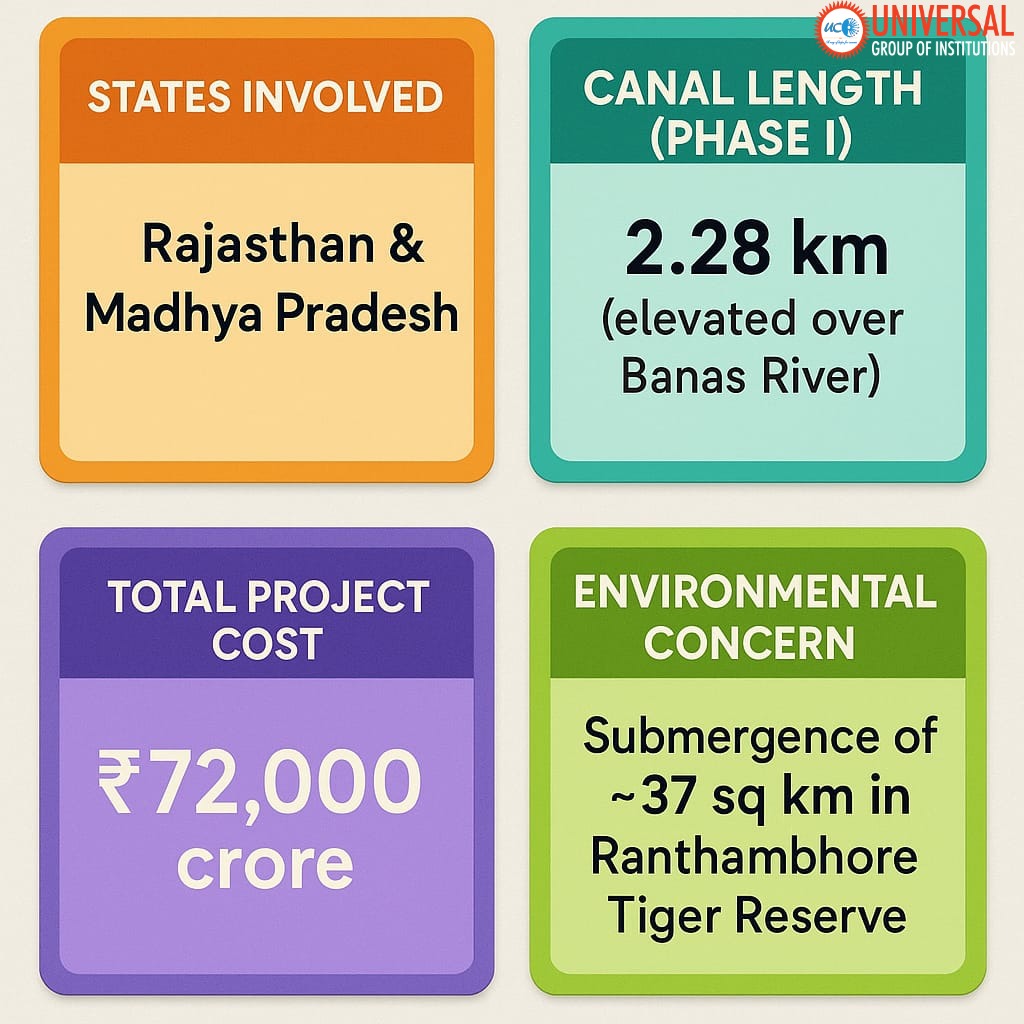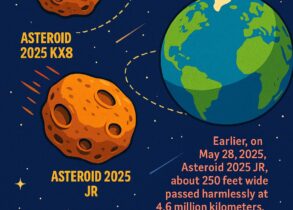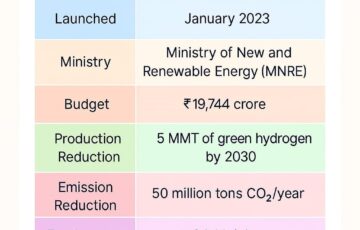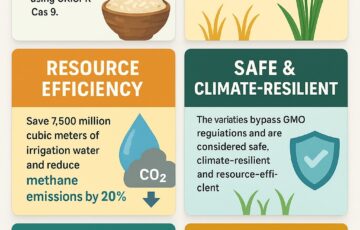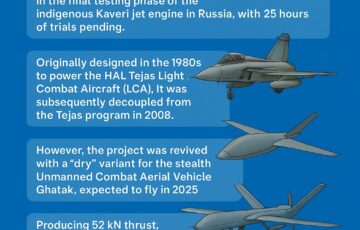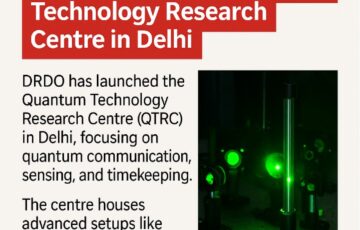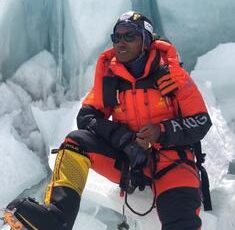Ram Jal Setu Project: Solving Rajasthan Water Crisis
Ram Jal Setu Link Project: Addressing Rajasthan’s Water Crisis Through Strategic River Interlinking
The Ram Jal Setu Link Project, formerly known as the East Rajasthan Canal Project (ERCP), is a groundbreaking river interlinking initiative aimed at tackling the persistent Rajasthan water crisis. This ambitious project on Rajasthan addresses the critical question: does Rajasthan have water? By focusing on water conservation and water security in eastern Rajasthan, the project has become a crucial topic for eastern rajasthan canal project upsc preparation. Inaugurated on December 17, 2024, this collaborative effort between the central government and the states of Rajasthan and Madhya Pradesh promises to transform the region’s water management landscape.
Project Overview and Significance
The ERCP project map and eastern rajasthan canal project map showcase the extensive coverage of this ambitious undertaking. The ERCP project in Rajasthan map highlights its strategic importance for the state’s water transfer needs, illustrating how the initiative aims to combat water scarcity in Rajasthan and enhance water security across multiple districts.
Key Objectives of the Ram Jal Setu Link Project
✅ Addressing Water Scarcity and Ensuring Equitable Distribution
- Provide equitable water distribution to over 17 water-stressed districts in eastern Rajasthan.
- Address the persistent water shortage in Rajasthan, considering the varying weather patterns across India, from the humid conditions in weather ranaghat to the arid climate of Rajasthan.
✅ Efficient Water Resource Management
- Utilize surplus monsoon water from the Parbati-Kalisindh-Chambal and Mej sub-basins.
- Mitigate the impact of monsoon disruptions, serving as a model for other regions facing similar challenges, such as weather gudivada in Andhra Pradesh.
✅ Comprehensive Water Utilization
- Provide water for drinking, irrigation, industrial use, and groundwater recharge.
- Combat groundwater depletion and support rural development and water conservation efforts.
- Address water needs across various sectors, from agriculture to industries like those in weather sivakasi, known for its fireworks production.
Key Features of the Eastern Rajasthan Canal Initiative
Water Allocation for Rajasthan
The project aims to allocate approximately 4,102 MCM (Million Cubic Meters) of water, distributed as follows:
- Drinking water: 1,744 MCM
- Irrigation: 1,159 MCM (covering about 2.82 lakh hectares)
- Industrial use: 205.75 MCM
- Reservoir filling and recharge: 723 MCM
- Recycled/drought contingency: 522 MCM
Beneficiary Districts
The ERCP Rajasthan project targets 17 districts: Jhalawar, Baran, Kota, Bundi, Tonk, Sawai Madhopur, Dausa, Karauli, Dholpur, Bharatpur, Deeg, Alwar, Khairthal-Tijara, Kotputli-Behror, Jaipur, Ajmer, and Beawar. This extensive coverage is expected to contribute significantly to socio-economic upliftment in the region, addressing water deficit issues common in many parts of India, from urban areas like weather ambernath to rural regions.
Infrastructure Development
Dams:
- Doongri Dam: Located in Rajasthan, with a height of 39 meters and a length of 1.6 km.
- Isarda Dam: Situated on the Banas River in Tonk-Sawai Madhopur district.
- Parban Dam: Under construction on the Parban River in Jhalawar district.
Barrages:
- Ramgarh Barrage: On the Kul River
- Mahalpur Barrage: On the Parbati River
- Navnera Barrage: On the Kalisindh River
- Mej Barrage: On the Mej River
- Rathod Barrage: On the Banas River
Elevated Canal:
A 2.28 km canal over the Banas River, connecting Pihilunda village in Dausa to Gughata village in Sawai Madhopur.
The ERCP project, along with the Chambal River Link Project and the Chambal Canal Irrigation Project, represents one of the major irrigation projects in Rajasthan. It aims to transform the state’s water management landscape by incorporating artificial reservoirs to enhance water storage capacity and address the Rajasthan water crisis. Additionally, the project complements traditional water conservation methods like kunds in Rajasthan, which have been used for centuries to harvest rainwater. These efforts are particularly important in regions with unpredictable weather patterns, such as weather balangir in Odisha, where monsoon variability can significantly impact water availability.
Current Status and Implementation (As of June 2025)
🏗️ Project Progress
- Phase I construction of this project on Rajasthan is set to commence following the final No Objection Certificate (NOC) from the forest department.
- Package-2 work has already begun.
- Estimated Project Cost: ₹72,000 crore, with 90% funding from the central government and 10% from the state governments.
The Rajasthan Water Resources Department, in collaboration with the National Water Development Agency, is overseeing the implementation of this massive water transfer project. The Bhajanlal Sharma government has prioritized the completion of this project to address the state’s water scarcity issues and mitigate the Rajasthan water crisis, recognizing its potential for rural development and improved water security.
Environmental Considerations and Challenges
🌿 Ecological Impact and Mitigation
The Ram Jal Setu Link Project faces significant environmental challenges:
- Potential submergence of approximately 37 sq km within the Ranthambhore Tiger Reserve, including parts of the Keladevi Wildlife Sanctuary.
- Concerns about the impact on wildlife habitats and biodiversity in drought-prone areas.
- Balancing ecological preservation with the urgent need for water conservation and socio-economic upliftment.
The project also aims to address climate challenges that affect water resources, including monsoon disruptions, which can significantly impact water availability and agricultural productivity in the region. These challenges are not unique to Rajasthan; regions like weather gudivada and weather balangir also face similar issues related to monsoon variability and water management.
Balancing these environmental concerns with the urgent need for water conservation and socio-economic upliftment remains a critical challenge for the project’s implementation. This balance is crucial for water management projects across India, from urban centers like weather ambernath to industrial hubs like weather sivakasi, as they strive to address water scarcity while preserving ecological integrity.

